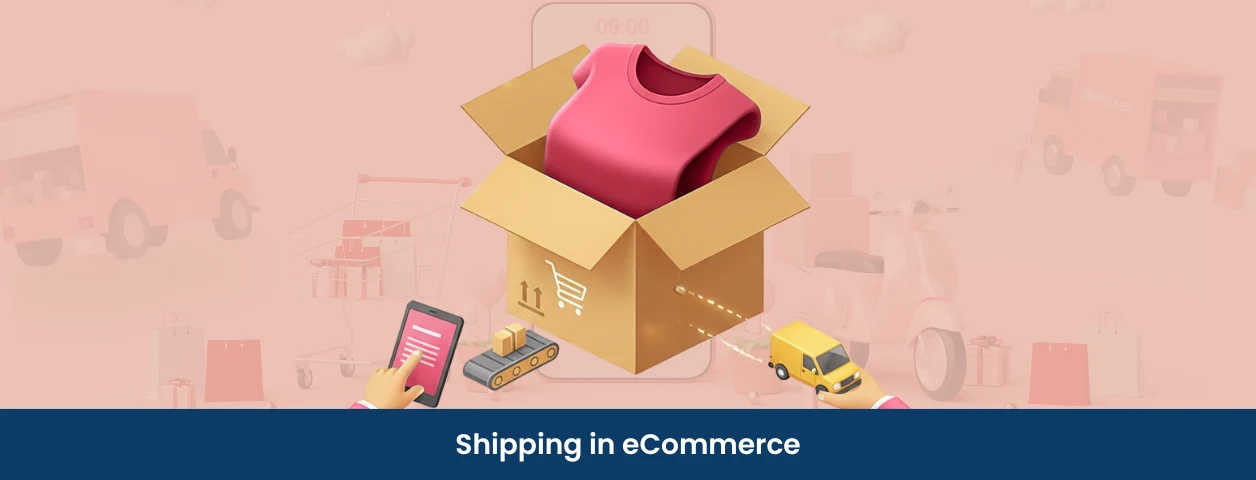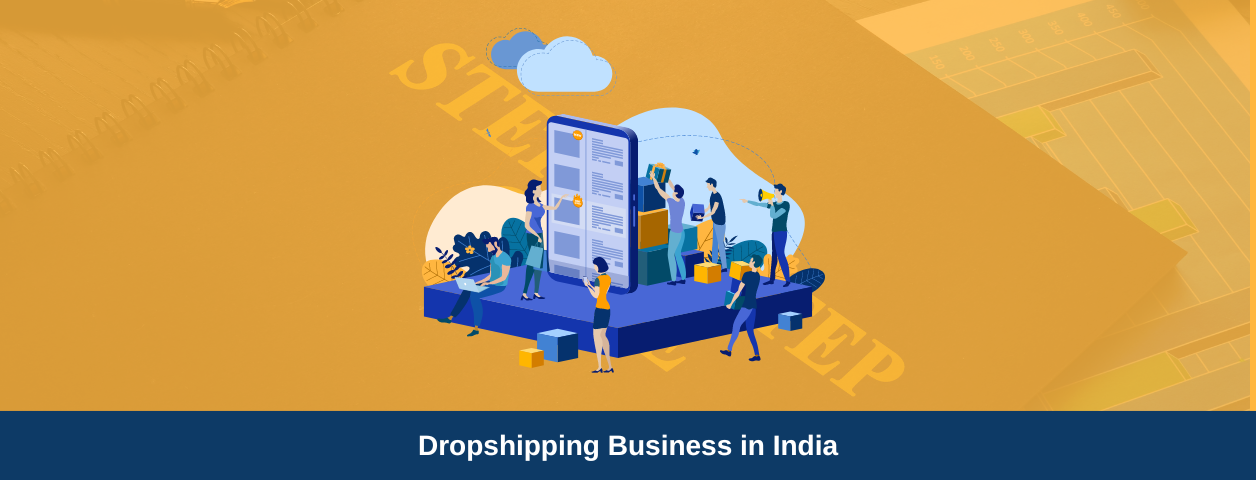Shipping is one of the most critical functions in building a successful eCommerce business. Whatever products you are selling, with fast, reliable, and affordable shipping can directly influence customer satisfaction, drive repeat purchases, generate positive reviews, and build overall brand trust.
In simple terms, eCommerce shipping refers to the complete process of receiving an order, packing it securely, selecting the right courier partner, dispatching it for transit, and ensuring it reaches the customer within the promised timeline.
But behind this simple flow are multiple operational decisions, such as choosing shipping modes, calculating delivery costs, managing international shipping orders, handling returns, and setting a clear shipping policy for eCommerce.
This guide explains how eCommerce shipping works, its cost factors, possible courier and packaging solutions, and strategies to optimise expenses. Ultimately, you’ll not only understand how eCommerce shipping works but also how to leverage it as a competitive advantage for your brand.
Key Takeaways:
- Shipping decisions depend on product weight, delivery zones, and whether you choose air or surface mode.
- eCommerce shipping directly impacts customer experience, repeat sales, and brand loyalty.
- Innovative packaging, bundle sales, and efficient returns management can significantly reduce shipping costs without compromising quality.
- Using an eCommerce shipping calculator helps sellers price shipping correctly and maintain profitability.
- Staying updated on industry trends and shipping terminologies empowers sellers to make strategic decisions that improve delivery and customer experience.
What is eCommerce Shipping?

eCommerce shipping is the process of delivering products sold online from the seller to the customer’s doorstep. It encompasses every step after the customer places an order and the order is packaged, such as,
- Selecting the shipping method and courier,
- Managing delivery,
- Handling returns,
- Tracking and delivery updates.
Also, ensuring customer communication throughout the journey is the final step to ensure a proper shipping completion process in eCommerce. In India’s fast-growing online marketplace, eCommerce shipping is more than just logistics; it plays a pivotal role in customer satisfaction and brand reputation.
A clear, structured shipping policy for eCommerce helps brands manage expectations, reduce confusion, and increase checkout conversions. With rising consumer expectations and increased competition, understanding eCommerce shipping has become essential for online sellers to survive and scale their businesses.
How eCommerce Shipping Works?
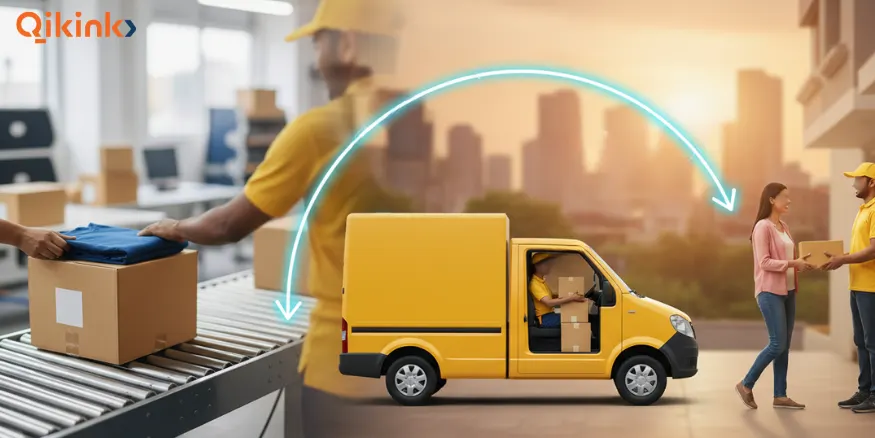
eCommerce shipping is a complex yet dynamic process shaped by rapid market growth, evolving customer expectations, and unique logistical challenges. Let us walk you through a detailed breakdown of how the shipping flow works in this modern online business world:
1. Order Processing
The moment a customer completes checkout, the order moves to a verification stage. Here, the system cross-checks and verifies payment status, product availability, and customer details. If verification fails, the order doesn’t progress to the next stage.
This stage matters because even a slight mismatch here leads to RTO (Return to Origin) later, which affects the profit margins in eCommerce. A brand that manages this stage well reduces delays, packing errors, and customer complaints.
2. Product Packing
Once the order is verified, it is sent to the warehouse or fulfilment house. Here, the product is picked from its inventory and packed securely. Speed and accuracy are the key factors of this process. Sellers should remember to,
- Pick the exact variety, including colour, size, and design, to avoid wrong-product deliveries.
- Pack the product securely enough to withstand shipping.
- Add custom branding elements, such as thank-you cards and stickers.
3. Courier Handover
After packing, the parcel is handed over to the selected courier partner. This step is the journey from your warehouse to the courier’s central hub. Different courier companies perform better in various regions and pin codes. A reliable courier match leads to fast delivery. A poor match leads to transit delays and returned orders.
If courier pickup times are consistent and timely, the order enters the logistics network without delay, ensuring a predictable, smooth delivery speed. So be cautious in selecting the perfect courier service for delivery.
4. Shipping Mode
At this stage, there is also a shipping mode selection based on delivery speed and budget:
- Surface Shipping (Ground and Ocean Freight): More economical, ideal for heavy or non-urgent deliveries, using ground or ocean freight routes.
- Air/Express Shipping (Air Freight): Faster but more expensive, best for priority or long-distance deliveries.
Selecting the proper mode balances cost and delivery speed, impacting customer satisfaction.
5. Delivery and Returns
After following the steps mentioned above, the order is about to be delivered. If it is a prepaid order, it can be delivered directly; if it is a Cash on Delivery (COD) order, the customer must collect it from their verified address, which avoids moving the order into RTO.
With Qikink, sellers can automate courier selection, select the proper shipping mode, track deliveries, and proactively notify customers.
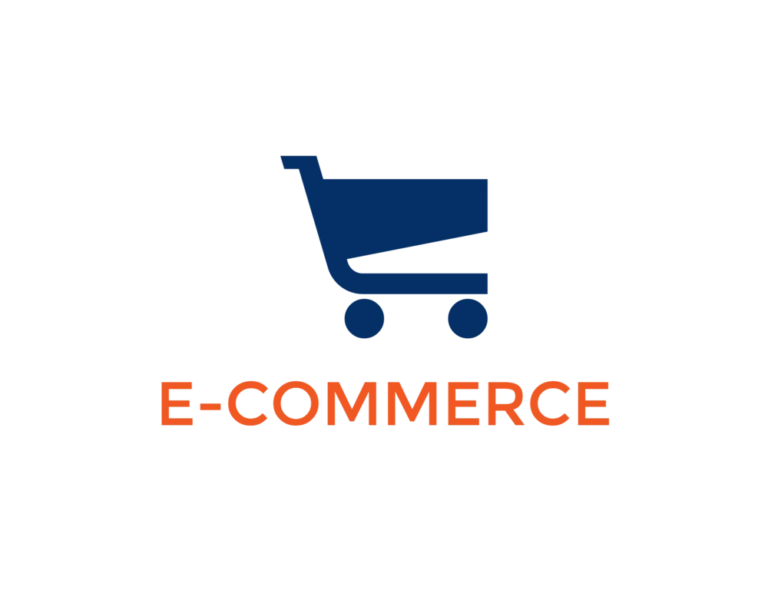
Understanding Core Elements of eCommerce Shipping
A smooth and successful eCommerce shipping operation relies on several critical elements. Each plays a crucial role in ensuring customer satisfaction and business profitability. Understanding those core elements of shipping can help online sellers make better operational decisions and improve profitability.
Shipping Options

Offering diverse shipping options addresses the needs of customers from budget-conscious buyers to those who prioritise speed. The primary options include:
- Free Shipping: Highly suitable for shoppers, as many prefer waiting a few extra days when shipping is free.
- Expedited or Express Shipping: For customers who value speed over cost. This option ensures domestic delivery within 1 to 3 days.
- Same-Day or Next-Day Delivery: A premium offering that can differentiate brands in metro areas but requires efficient operations and partnered local couriers. Popular in urban centres, especially for urgent purchases like gifts or essentials.
Packaging and Branding

More than protection, packaging the product perfectly and providing the best unboxing experience for your customer positions your brand as a trusted one. Strong, secure packaging minimises damage rates and costly returns. While packaging your product, remember to,
- Use sturdy boxes, bubble wrap, or foam for fragile items.
- Add custom letters or cards along with other branded elements and tissue paper for safety.
- Packaging can also optimise shipping costs and enhance safety by minimising void space and using box packing.
Shipping Costs and Pricing
Shipping costs significantly affect profit margins and customer decisions. Prices depend on: product weight and dimensions, delivery location within domestic or international zones, and shipping mode.
Higher shipping charges can increase cart abandonment, while uncalculated low charges can also reduce profitability. Standard pricing approaches include:
- Flat-Rate Shipping: A single rate for all orders, simple for customers to understand.
- Weight-Based Shipping: Charges based on product weight or volume.
- Zone-Based Pricing: Costs vary depending on delivery distance or pin code.
- Free Shipping with Product Price Inclusion: Incorporates shipping costs into the product price to make “free shipping” more appealing.
Shipping Carriers and Partners
Choosing the right courier partner is critical because factors like coverage, delivery speed, reliability, and cost vary across carriers. In India, some popular options are:
- Shiprocket
- Delhivery
- Blue Dart Express
- XpressBees
- Ekart
- India Post
Finding a reliable courier partnership ensures faster delivery, fewer returns, and better customer satisfaction. There are many other carriers to select from in India. Choosing a suitable shipping partner is one of the most essential eCommerce shipping solutions for online sellers.
Delivery Speed and Expectations
Indian consumers increasingly expect faster deliveries with reliable estimated delivery dates and live tracking updates. Clearly defined Service Level Agreements (SLAs) and realistic delivery timeframes help build trust. Also, try to follow the steps:
- Providing estimated delivery dates at checkout.
- Sending tracking updates and delivery notifications.
- Offering multiple shipping modes to balance cost and speed.
Qikink supports same-day fulfilment for rush orders placed before 9 AM and offers multiple shipping speeds to meet diverse customer expectations.
International Shipping and Customs Handling
International shipping adds responsibilities that require global compliance with import/export regulations, handling customs paperwork, and managing longer transit times and additional fees such as duties and taxes. International shipments often face delays due to transit issues. To streamline them:
- Clearly communicate expected delivery timelines to customers.
- Include any customs fees and import duties in your product or shipping price.
- Use trusted courier partners with international expertise.
Understanding these elements ensures your shipping runs smoothly and your customers receive a seamless delivery, while also uplifting your brand identity and profit margins.
eCommerce Shipping Solutions for Online Stores
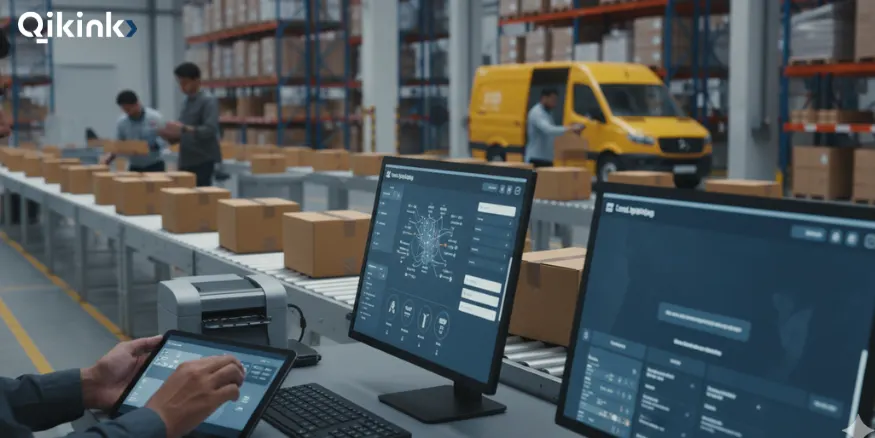
Modern eCommerce shipping isn’t just about choosing a courier; it’s powered by software solutions, automation tools, and integrated platforms that handle logistics, order tracking, customer notifications, and returns management.
In today’s technological world, adopting the right shipping solutions can simplify fulfilment, reduce losses, and deliver a seamless customer experience. Let us discuss the key solutions that online eCommerce stores implement for shipping.
Shipping Platforms and Courier Aggregators
Instead of working with multiple courier companies directly, most eCommerce brands use shipping aggregator platforms that allow you to:
- Compare shipping rates instantly.
- Assign couriers automatically based on region performance.
- Generate shipping labels in one click.
- Automate pickups and bulk shipments.
This removes manual decision-making and helps avoid delays. If the aggregator helps assign the best courier to each location, the return rate drops significantly.
Fulfilment Centres and Third-Party Logistics
Some brands choose to outsource storage, packing, and shipping to a third-party fulfilment services centre. This is useful when:
- You don’t have warehouse space.
- Your order volume is growing.
- You want faster delivery across multiple regions.
Send your products to the fulfilment warehouse, where they are packed and shipped. This reduces your workload and improves delivery speed, especially if the fulfilment partner has multiple warehouses near your target customers.
Returns Management and Verification Tools
Return to Origin is one of the costliest challenges for Indian eCommerce. But with automated NDR (Non-Delivery Report) technology, you can manage high-risk COD (Cash on Delivery) orders.
This tool helps to send automated customer confirmations on WhatsApp, optimise address validation, and enable rescheduling follow-ups across SMS and email. Returns to Origin management has become simpler with tools such as Zoko, Shiprocket Engage 360, and others, which reduce failed deliveries and recover revenue lost to RTOs.
With Qikink’s return management, sellers benefit from 100-day storage for returned orders and free RTO handling, further reducing reverse logistics costs.
Order Tracking Systems & Notification
Once the package leaves your warehouse, timely communication is everything. Modern tracking solutions allow you to:
- Send real-time SMS/email updates to customers.
- Show a live tracking page with your brand logo.
- Ensure to support customer queries and build trust and transparency.
Marketplace Integrations
The latest shipping solutions integrate directly with eCommerce platforms like Shopify or WooCommerce, automating order flows, syncing inventory, and simplifying fulfilment without manual intervention.
By leveraging these solutions, online sellers can offer customers more delivery options, reduce operational costs, manage scale, and stay competitive in India’s fast-evolving eCommerce landscape.

How is Shipping Calculated?
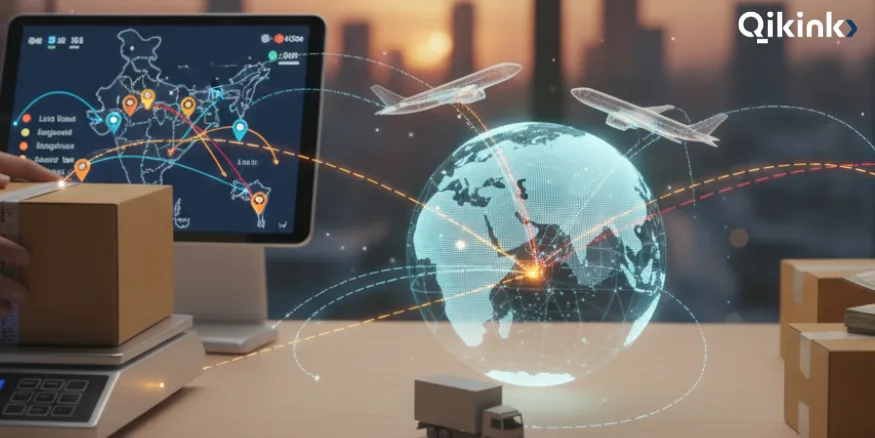
Calculating shipping costs accurately is also an essential solution for eCommerce sellers to maintain profitability and offer transparent pricing that customers can trust. Shipping charges vary based on several key factors that affect the total cost from the warehouse to the customer’s doorstep.
1. Product Dimensions and Weight
The primary components determining shipping prices are package weight and dimensions. Carriers use either the actual weight or volumetric weight, whichever is higher, to calculate costs.
- Actual Weight: The product’s real weight measured on a scale.
- Volumetric Weight: Calculated based on the package’s length, width and height.
For bulky but light items, volumetric weight often determines the cost. Sellers should pack efficiently to avoid unnecessary charges. Using standardised box sizes can also optimise shipping rates.
2. Shipping Address and Distance
The distance between the origin and the delivery address directly affects shipping rates. Domestic shipments are usually priced by zone or region, with more distant zones charging higher prices. International shipments include additional fees such as customs clearance, duties, and taxes, resulting in higher overall charges.
- Domestic Shipping: Prices are typically based on pin codes.
- International Shipping: Charges include long-distance logistics and potential local taxes.
3. Shipping Mode
The chosen shipping method, air or surface, has a major impact on costs and delivery speed. Air shipping is faster but also more expensive, which is only ideal for urgent or long-distance deliveries. On the other hand, surface shipping offers economical solutions suited for heavier, non-urgent shipments.
4. Payment Mode and Returns
Payment mode influences pricing; Cash on Delivery (COD) orders often attract extra handling fees. COD orders and returns introduce extra costs that sellers must account for:
- COD Charges: Some courier partners include additional handling fees for COD transactions. On average, the COD rate per 500g charges up to ₹100.
- Returns / Return to Origin: Incorrect addresses can result in failed deliveries, triggering RTOs and incurring costs.
Always verify customer addresses during order processing and provide tracking updates to minimise returns. Additional services like insurance, signature confirmation, or special handling also add to the cost. Efficient management of COD and RTO not only reduces extra costs but also improves customer trust and operational efficiency.
eCommerce Shipping Calculator
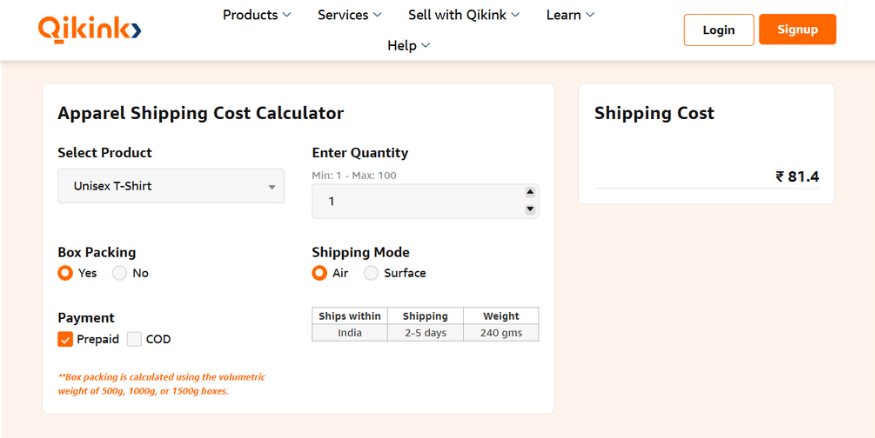
Tools like courier shipping calculators allow sellers to enter package details, such as weight, dimensions, pickup and delivery pin codes, and payment preferences, to get instant rate estimates from multiple carriers.
These calculators help avoid shipping cost surprises, plan budgets, price products accurately, and choose the best shipping solutions for their business needs. By leveraging such calculators and strategically selecting shipping options, sellers can optimise shipping expenses while delivering a positive customer experience.
Sellers can also use Qikink’s eCommerce shipping calculator to estimate costs accurately and make strategic decisions about shipping modes and charges.
Shipping Policy for eCommerce
A well-defined shipping policy helps set clear expectations for customers and prevents disputes. It outlines how long delivery will take, how shipping charges are calculated, what happens in case of delays, and how returns are handled. An effective shipping policy supports trust, transparency, and smoother order handling.
What Should Your Shipping Policy Include?
- Processing Time: State how long it will take to process orders before dispatch, and mention any cut-off timings and how weekends or holidays affect the order fulfilment.
- Delivery Estimates: List all available shipping options and their estimated delivery times, with realistic timeframes for each carrier or shipping mode you offer.
- Shipping Clarifications: Explain shipping charges, and highlight the orders that you offer free shipping. Also, clarify the geographic regions or countries you ship to, as well as any other charges.
- Order Tracking: Inform customers about shipment tracking via message updates and access live shipment status.
- Returns Management: Summarise the process for returns, exchanges, and RTOs, including eligibility, required timelines, and who pays for return shipping.
- Payment Modes: Clearly list the available payment modes and explain how COD orders are handled, including any additional charges, if applicable.
A clear return policy prevents misunderstandings and safeguards both seller and customer. Make sure to periodically update your policy as your shipping solutions, partners, and product catalogue evolve.
How can You Save on eCommerce Shipping Costs?
Reducing shipping costs significantly increases profit margins and helps remain competitive in India’s fast-moving online retail market. Here are some proven strategies for reducing the eCommerce shipping costs,
- Combine multiple items into a single bundle or shipping slab to share a single shipping fee.
- Use lightweight, sturdy materials and minimise unused box space. Small, well-sized packages reduce volumetric weight charges and material expenses.
- Utilise shipping software to compare courier rates in real time and automatically assign the most economical carrier for each region and order weight.
- If you ship consistently or in higher volumes, negotiate custom rates with couriers to secure better pricing, discounts, or seasonal deals.
- Set up local pickup points or ‘click to collect’ options to eliminate last-mile delivery costs and benefit regular buyers.
- Efficient RTO management, whether through tools or by implementing low to no RTO charges can reduce reverse shipping expenses.
- Consider consolidating shipments to a single region or to third-party fulfilment centres to reduce costs.
- Simpler pricing reduces customer cart abandonment, while also helping sellers efficiently estimate costs and maintain healthy margins.
By following these strategies with optimised packaging, automation and proactive return management, eCommerce sellers can keep shipping costs predictable and ensure profitability.
Why Affordable Print On Demand Shipping Costs are Important?
In Print On Demand, customers expect their orders to arrive quickly, safely, and at a reasonable price. If your shipping costs become too high, the product feels expensive right away, even if your base price is competitive.
Impact on Profit Margins
If shipping charges are too high, profit margins shrink and pricing becomes less competitive. Affordable, predictable rates can ensure every sale supports business growth. Use Qikink’s profit margin calculator to improve your business profitability.
Lower Cart Abandonment
Transparent shipping has been shown to reduce abandoned carts at checkout, especially among buyers in remote pin codes. Offering flat rates or free shipping builds trust and encourages more purchases.
Encourage Repeat Purchases
If customers receive their order on time without paying extra fees, they are more likely to return for more purchases. Repeat buyers trust your brand if it has clear rate structures, fewer hidden fees, and reliable return policies.
Streamline Operations
When your shipping costs per order are under control, you can scale advertising and influencer collaborations while offering better promotions without losing profits. Also, if the flat rates are standardised, it simplifies the operations and order processing, and sellers don’t waste time recalculating every shipment.
Enable Global Expansion
International shipping rates help unlock new markets where customers are far more likely to order cross-border, only if shipping costs are comparable to local options and duties are clearly communicated upfront.
Lower logistics costs also let brands price aggressively, boost conversion rates, and invest more in marketing or customer service. By prioritising affordable, transparent print on demand shipping rates, entrepreneurs can grow sustainably and protect their profit margins.
eCommerce Shipping with Qikink

Qikink is India’s leading Print on Demand (POD) platform, trusted by thousands of online brands for fast, reliable, and scalable order fulfilment. Qikink simplifies eCommerce shipping for brands by reducing reverse logistics costs and offering transparent, predictable shipping rates for various shipment modes.
|
Shipment Modes
|
Rate (₹ per 500g, Incl. GST)
|
Typical Delivery Time
|
|---|---|---|
|
Surface Shipping
|
₹50
|
2-5 days
|
|
Air Shipping
|
₹63.7
|
1-3 days
|
|
Cash on Delivery
|
₹40.12 (per order)
|
Varies by destination
|
|
India Post Service
|
₹63.7
|
3-15 days
|
|
International (USA)
|
₹906
|
4-10 days
|
|
RTO
|
₹0
|
Same as Forwarding
|
|
Reverse
|
Same as Forwarding
|
Same as Forwarding
|
Note: Delivery rates and timelines are subject to change and may vary by region and courier service conditions.
Here’s how else Qikink helps in your shipping process work for your eCommerce and print on demand needs:
- The Dashboard helps track every step, generate shipping labels, monitor accounts, and view branded shipment status.
- Handles printing, custom branding, neck labels, stickers, and premium, eco-friendly packaging, or you can opt for gift packs and thank-you cards.
- Automatically assigns the best courier based on destination and delivery speed, and generates real-time tracking details for customers.
- Supports Amazon order fulfilment via self-shipping so that store owners can scale easily without minimum order requirements or inventory holding.
- Customers receive branded SMS/email shipment updates and can check live status.
With Qikink, sellers can focus on product, brand, and marketing, while fulfilment and logistics operate efficiently in the background.

Final Thoughts
The way your orders are packed, shipped, tracked, and delivered directly shapes how customers feel about your brand. Quick, trusted, and cost-effective shipping can turn a first-time buyer into a loyal repeat customer, while delays, unclear tracking, or high delivery charges can do the opposite.
Use eCommerce shipping calculators to price your shipments and maintain profitability accurately. Diversify shipment modes between surface and air freight based on your budget and customer expectations for delivery speed. Offering options like same-day delivery further enhances the professional shopping experience.
Optimising your shipping strategy with options such as free shipping thresholds, flat-rate pricing, and modern solutions like Qikink’s print on demand fulfilment can significantly reduce costs. Start today by signing up with Qikink and experience a seamless, cost-effective shipping process designed to boost your online store’s growth and customer satisfaction.
Read More
Frequently Asked Questions
What is the best shipping company for eCommerce?
There’s no one-size-fits-all answer, because “best” depends on your business model, product weight, destination pin codes, and budget. For most Indian eCommerce sellers, a hybrid approach works best. When selecting a courier partner, evaluate:
- Coverage in your target pin codes
- On-time delivery performance & few failed / RTOs
- Transparent tracking & customer updates
- Costs that allow for healthy profit margins
What are 4 eCommerce shipping strategies that actually work wonders?
Here are four proven strategies you can implement right away to improve delivery experience and reduce costs:
- Offer Free Shipping Above a Minimum Order Value.
- Pack Efficiently to Minimise Volumetric Weight.
- Use Automated Courier Allocation Based on Pin Code Performance.
- Provide Proactive Tracking and Pre-Delivery Communication.
What role does order fulfilment play in the shipping process?
Order fulfilment, which is a critical aspect of the shipping process, involves receiving, processing, and delivering customer orders. This includes managing inventory, selecting items, and preparing shipments for delivery.
How do eCommerce businesses track and manage shipments?
eCommerce businesses utilise various tools and technologies, such as order management systems, shipping software, and tracking numbers, to track and manage shipments. These tools allow companies to monitor shipment status, provide real-time customer updates, and manage inventory levels effectively.
What shipping options are commonly offered by online retailers?
Customers can choose from various shipping options when shopping online, including standard, express, same-day, and free shipping. The availability of these options may vary by retailer and customer location.

